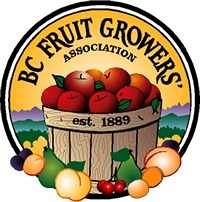Bruce Spanworm (Miscellaneous Pests)
General Description
Hosts
Fruit trees, native trees and shrubs including willow, poplar, maple and alder.
Damage
Buds - Large areas chewed from buds, petals and flower parts.
Leaves - Large areas chewed from leaves before bloom; severe infestations can almost defoliate trees.
Fruit - Holes in small fruit resulting in small russeted scars in mature fruit.
Identification
Larva - Yellowish-green to dark green with light to dark brown head; larger larva with cream to white lateral stripes and moves with looping motion (Fig. 1).
| Figure 1. Bruce spanworm larva. (H. Philip) |
Adult - Wingless female; male moth with thin, semitransparent wings banded with brown and gray.
Life History
Bruce spanworm overwinters as eggs laid singly on twigs. The eggs hatch near the green tip stage of apple. Most larvae mature and drop to the ground by petal-fall. Larvae remain in the soil until pupation in the fall. Adults appear in October and November. Wingless females crawl up the tree, mate and lay overwintering eggs.
Monitoring
Examine fruit bud and blossom clusters for larvae and feeding damage. Limb taps can also detect larvae.
Management
Chemical Control
Heavy infestations require a spray at the pink bud stage. There are currently no registered products for pre-bloom application against this pest. Petal fall sprays for leafrollers and bud moth will also control any spanworm present.
